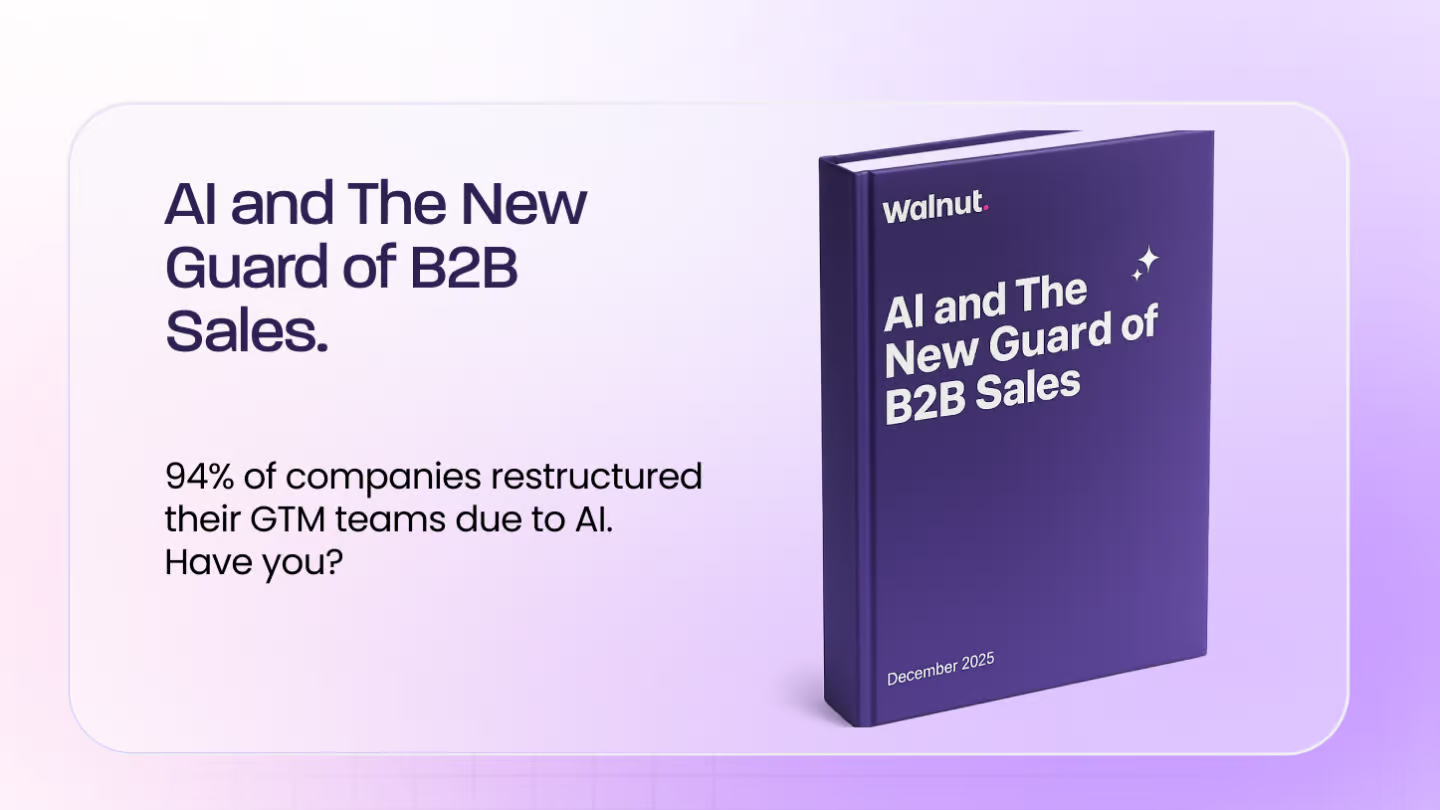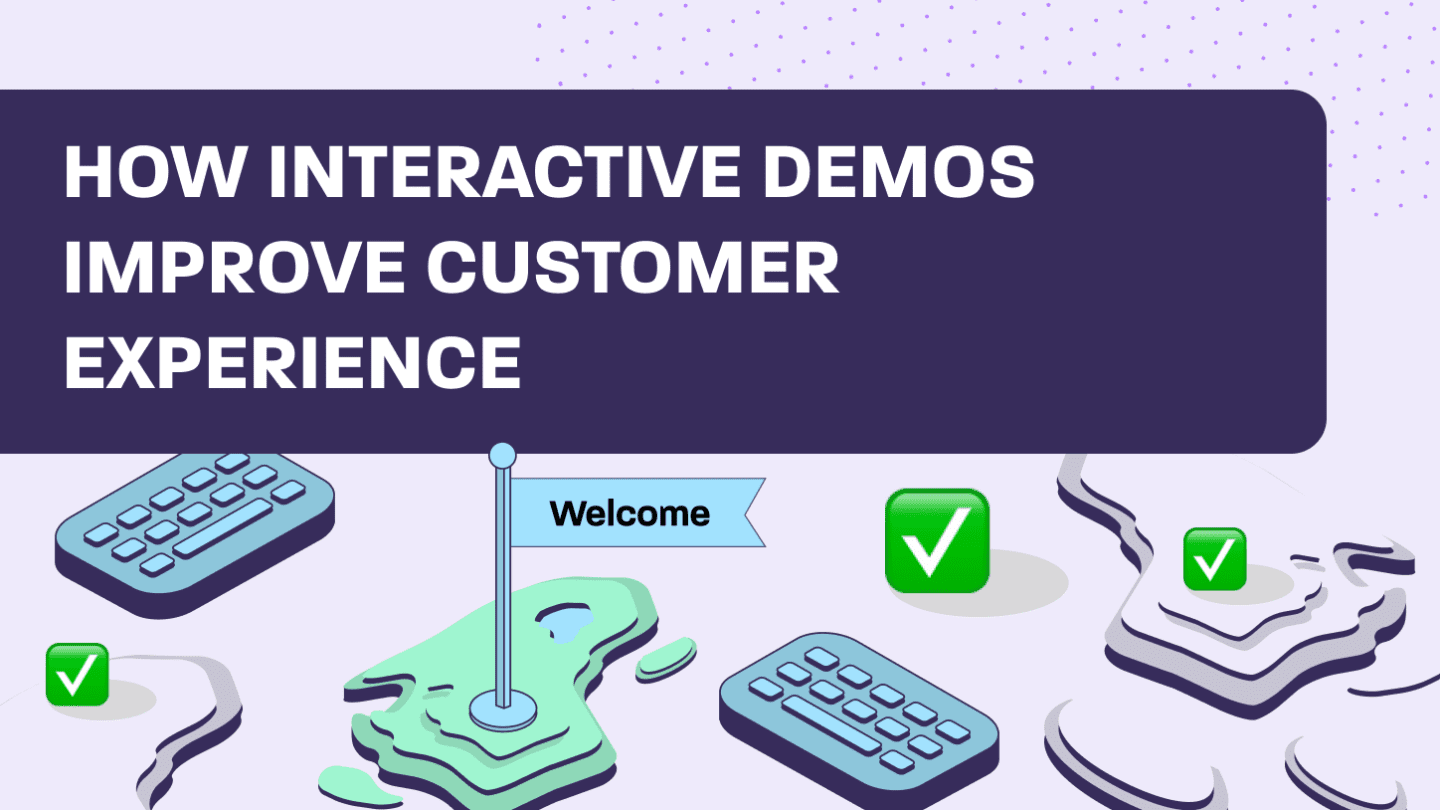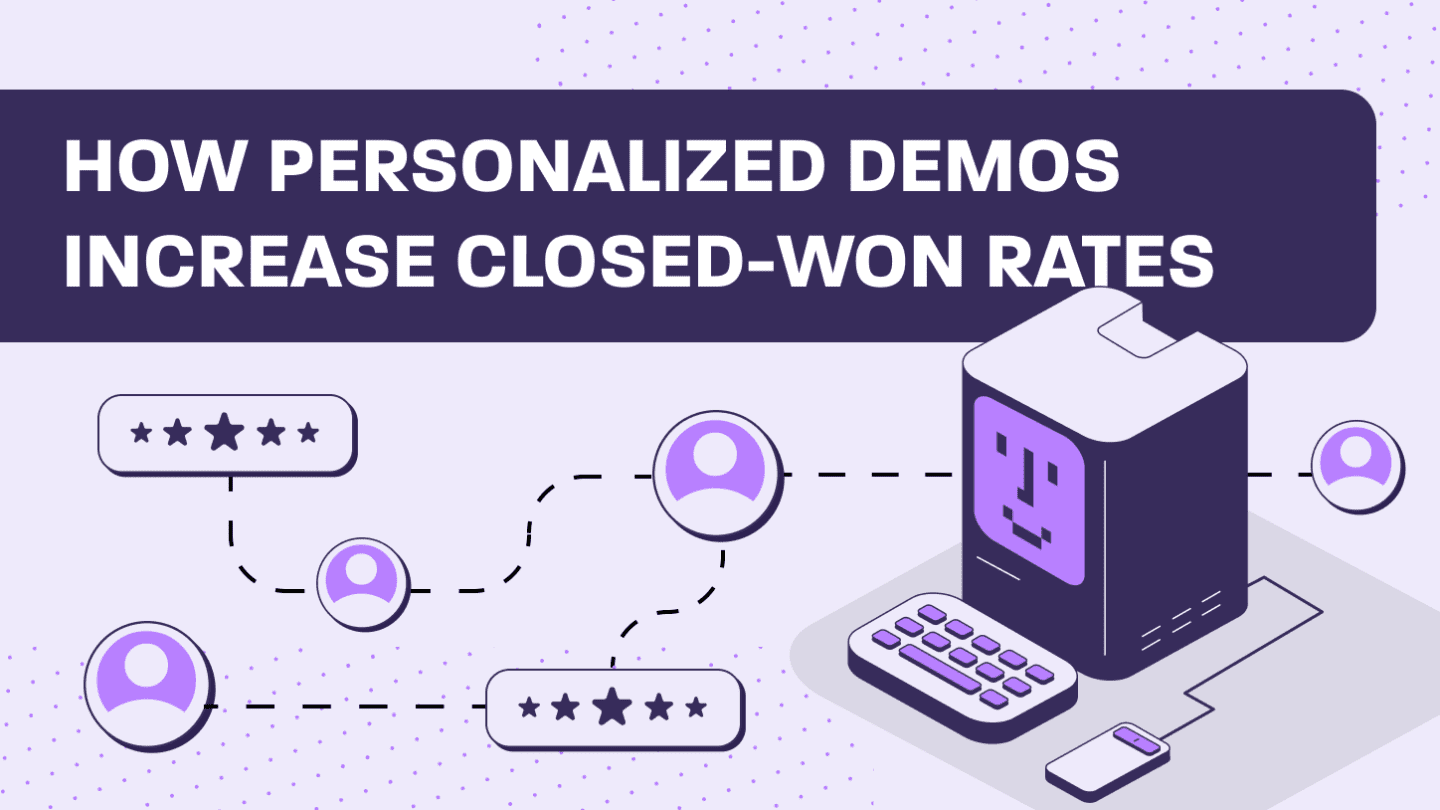Updated on September 3, 2024.
Hello! We are Walnut and in our research we noticed that a reader like yourself can really benefit from a blog about outbound sales. We think it may even help you grow your revenue.
Did we catch you at the right moment? Is there truly ever not a good moment to learn what you can do to increase sales?
Now, we know what you might have heard—that outbound sales are no longer a thing, and that sales are made by inbound. Well, regardless of how good your inbound marketing is, there’s a time and place to pick up that phone or start drafting that email.
That’s because outbound is still (and always will be) an essential part of a sales strategy. You just need to ensure that you’re implementing the correct outbound sales techniques.
That’s why today we’ll cover exactly how to create an effective outbound sales campaign. Let’s get started.
What are outbound sales for SaaS?
Before we delve too deep, let’s cover the basics. What exactly is outbound sales?
Outbound sales are the process of reaching out to cold leads and pitching. Sales reps can do it via cold calling, cold emails, or other forms of communication, like LinkedIn messages or Facebook.
What are the differences between inbound and outbound sales strategies?
The critical difference between inbound vs. outbound sales is the person who initiates the process.
Outbound sales are the act of reaching out to people via various forms of communication to see if there is potential interest in your SaaS. You are reaching out to people who have never expressed an interest or contacted your company before.
On the other hand, inbound sales are when a potential customer contacts your business to inquire about your offering. The lead gets in touch with the company via content marketing, a referral, or paid advertising.
The outbound sales process
Outbound sales involves actively reaching out to prospects to generate business. Here’s a brief guide to break down the essential steps:
1. Identify prospects
Start by pinpointing potential clients that match your target customer profile. Use different tools and resources to research relevant industries, companies, and key decision-makers. This initial step is critical for the success of your sales efforts.
2. Generate leads
Create a list of potential clients based on your research. Make sure to set specific criteria to ensure these leads are a good fit for your business and have a high chance of converting.
3. Make contact
Reach out to your leads using various communication channels like phone calls, emails, or social media. It’s important to personalize your approach by addressing the unique needs and challenges of each prospect, which increases your chances of success.
4. Qualify leads
Evaluate each lead’s level of interest and how well they match your product. Use frameworks like BANT (Budget, Authority, Need, Timing) to methodically assess each prospect.
5. Present your offer
Deliver a persuasive presentation of your product or service, focusing on how it addresses the specific problems of your prospect and adds value to their business. Adjust your pitch based on what you learned during the qualification process.
6. Handle objections
Listen carefully to any objections or concerns your prospect might have. Respond clearly and convincingly, offering solutions and reassurance to overcome any hesitations.
7. Close the deal
Work through negotiations on terms, pricing, and conditions to secure a commitment. Engage your legal team as needed to finalize the agreement.
8. Follow up
Ensure a smooth handoff from sales to CS. Provide any necessary support and resources to help your new customer get started successfully.
9. Maintain the relationship
Keep nurturing the relationship after the sale. Stay alert to additional needs and opportunities for upselling and cross-selling as they arise.
10. Analyze and improve
Regularly review your performance by analyzing data and gathering customer feedback. Use these insights to continuously refine your sales approach.
Outbound sales examples
Outbound sales involves proactively reaching out to potential customers. Here are key techniques:
Cold calling
Cold calling is essentially direct phone outreach to prospects. An example of this is a software company calling businesses to introduce their new CRM system.
Cold emailing
Cold emailing is sending unsolicited, targeted emails. An example of this is a digital marketing agency emailing local businesses about their SEO services.
Direct mail
Direct mail involves sending physical promotional materials. A real estate agent mailing property listings to homeowners in a specific neighborhood is an example of this.
Social selling
This involves leveraging social media for outreach. An example of this is a B2B consultant connecting with executives on LinkedIn to offer productivity workshops.
Networking events
This approach involves attending industry gatherings to meet prospects face-to-face. A financial advisor participating in a small business expo is an example.
Webinars and seminars
This involves hosting informational sessions to attract and engage potential clients. A SaaS company hosting a webinar on cloud computing trends is an example.
Door-to-door sales
Door-to-door sales consist of in-person visits to homes or businesses. An example is a home security company representative visiting residential areas to demonstrate new alarm systems.
Referral programs
Referral programs involve encouraging existing customers to refer new clients. An example is an online course platform offering discounts for successful referrals.
Partnerships and alliances
This involves forming strategic collaborations to access new customer bases. An example of this is a project management tool partnering with a freelance platform to reach independent professionals.
Sales blitz
This is a concentrated effort on a specific market segment. An example is an insurance company organizing a week-long campaign targeting new homeowners in a growing suburb.
Account-based marketing (ABM)
This involves creating tailored campaigns for high-value accounts. An example is an IT services firm developing personalized pitches for top tech companies in their region.
Benefits of outbound sales
Outbound sales offers a powerful strategy to boost your sales efforts by taking a proactive approach to finding and engaging buyers.
Unlike inbound sales, which relies on attracting leads over time, outbound sales puts you in the driver’s seat, allowing you to actively pursue targeted prospects. This direct method opens up new opportunities, expands your customer base, and ultimately drives higher sales and revenue.
Let’s dive into the key benefits of outbound sales.
1. Enhanced audience targeting
One of the biggest advantages of outbound sales is the ability to precisely target your ideal audience.
By developing an ideal customer profile (ICP), you can zero in on prospects who are most likely to benefit from your product. This targeted approach not only saves time, but also increases your chances of success. When you know exactly who you’re reaching out to, you can tailor your messages, emails, and calls to resonate with their specific needs and pain points.
Personalization is a critical component of successful outbound sales. By customizing your outreach, you create a stronger connection with prospects, making them feel understood and valued.
2. Faster buyer responses
In the world of sales, time is money.
Outbound sales allows you to take immediate action by reaching out to potential customers directly, rather than waiting for leads to come to you. This proactive strategy enables you to present your value proposition right away, address any concerns, and demonstrate how your product is the best solution for their needs.
The result? Faster responses from buyers and a more streamlined sales cycle. By eliminating the lengthy process of waiting for leads to mature, outbound sales helps you close deals quicker, accelerating your revenue generation.
3. Predictable lead generation
Outbound sales gives you greater control over your lead generation efforts.
Rather than relying on the unpredictable flow of inbound leads, you can actively create a pipeline of potential customers. This predictability allows you to manage your sales activities more efficiently, ensuring a steady stream of opportunities.
With outbound sales, the more prospects you reach out to, the greater your chances of booking meetings and closing deals. This level of control makes it easier to plan your sales strategy and allocate resources effectively, driving consistent growth.
4. Stronger rapport building
Building trust and rapport with prospects is crucial in today’s competitive market.
Outbound sales allows for direct interaction from the very first touchpoint, giving you the opportunity to establish a strong connection with potential customers. By engaging with them personally, you can better understand their specific challenges and needs.
This personalized approach positions you as a trusted advisor, rather than just another salesperson.
5. Process automation
Automation is a game-changer in outbound sales.
High-performing sales teams are twice as likely to use automated processes, which streamline repetitive tasks and free up time for more important activities. Automation tools can help you track prospecting activities, schedule follow-ups, send personalized emails, and even make calls automatically.
By leveraging automation, you can focus more on building relationships and closing deals, rather than getting bogged down in administrative tasks. This not only increases efficiency, but also enhances your overall sales performance.
Outbound sales metrics to track
Tracking the right metrics in outbound sales is essential for refining your strategy and driving results.
One key metric is conversion rate, which measures the percentage of leads that turn into actual customers. A high conversion rate indicates that your targeting and messaging are on point.
Another crucial metric is average deal size. This helps you understand the value of each customer and guides you in prioritizing high-value prospects. By tracking the average deal size, you can also identify opportunities to upsell or cross-sell.
Response rate is another important metric, reflecting how often prospects engage with your outreach efforts. A low response rate might suggest that your messaging needs adjustment, while a high rate indicates effective engagement.
Sales cycle length is also vital, as it shows how long it takes to close a deal. A shorter sales cycle often means a more efficient sales process, allowing you to close more deals in less time.
Finally, monitoring the number of outbound touches (calls, emails, etc.) helps assess the effort needed to convert a lead.
By analyzing these metrics, you can fine tune your outbound sales process and achieve better results over time.
B2B vs. B2C outbound sales
B2B and B2C outbound sales approaches differ significantly in terms of strategy, process, and customer engagement. Understanding these differences is crucial for sales teams to tailor their efforts effectively.
In B2B outbound sales, the focus is on targeting businesses rather than individual consumers. The sales process is typically longer and more complex, often involving multiple decision-makers within an organization.
Because of this complexity, B2B sales reps must engage in thorough research to understand the unique needs and pain points of each business. The messaging in B2B outbound sales is usually more formal and value-driven, emphasizing how the product or service can solve specific business challenges, improve efficiency, or provide a competitive edge. Building long-term relationships is key in B2B, as these sales often lead to ongoing partnerships and larger, more sustained revenue streams.
On the other hand, B2C outbound sales involves selling directly to individual consumers. The sales cycle in B2C is generally shorter, with quicker decision-making processes.
B2C sales relies heavily on emotional appeal, convenience, and immediate benefits to the consumer. The messaging is typically more direct and focused on how the product can improve the consumer’s daily life or satisfy a particular need. Since the purchasing decision is often made by one person, the sales approach can be more straightforward and volume-driven, aiming to reach as many potential customers as possible.
While both B2B and B2C outbound sales share the goal of converting leads into customers, the strategies employed are distinct. B2B requires a more nuanced, relationship-oriented approach, focusing on the long-term value for businesses, while B2C thrives on appealing to individual needs and desires, often with a faster, more aggressive sales process.
Recognizing these differences allows sales teams to optimize their methods for each target audience, maximizing effectiveness and driving better results.
6 easy steps to start your SaaS outbound sales campaign
Now, if you want to prove all the outbound sales haters wrong and create a truly successful outbound sales campaign that will both increase your sales and grow your brand, then there are a few things you may want to know.
While the steps may look slightly different depending on your company, here’s a general idea of how your process should go:
1. Identify your market and create segments
The first step is to understand your target audience.
Narrow down your search to create small segments grouped by demographics, preferences, website activity, etc. Determine who are you looking to talk to, what their potential needs are, and how you can help them.
By creating segments and grouping your leads by these constraints, you can tailor your sales approach to the unique needs of each category and their specific preferences.
2. Gather leads
Once you identify the segment you want to target, it’s time to start finding the specific leads you’d like to contact.
There are many different ways to create a list of leads. You can purchase a database or search on sites like Zoominfo, Crunchbase, or LinkedIn. The key is to create a high-quality database with the most appropriate leads.
Make sure to include the details of the decision-maker within the company you’re reaching out to, not just the main email address listed on the website.
When creating your list, it can be useful to include the lead’s name, company, position, and potential pain points that your problem can solve.
3. Outreach
Ok, it’s the big moment. This is the stage where your sales team begins to get in touch with leads via call, email, or social media.
Each cold outreach technique has its own strategy and set of KPIs to measure success. For example, a cold call campaign should measure the number of calls and conversations in relation to the number of demos booked and closed sales. An email campaign, however, could track the open rate, forms filled out, and meetings booked.
At this stage, if you’re sending out cold emails, it can be useful to utilize interactive product demos to give your leads access to experiencing and loving your product from the outset. Not only will it create engagement from the start, it’ll help you better qualify your leads and take advantage of the power of product-led growth.
4. Qualify your leads
Once you start interacting with your prospects, you should focus on qualifying your leads.
Ask questions to discover the pain points of your potential buyers and assess whether or not there is any buying intent. A good way to make sure your prospects are in a position to purchase is by using the BANT approach. This includes ensuring your lead has the Budget, Authority, Need, and Timeline to complete the sale.
You can also use a lead scoring system to identify which leads are better and deserving priority. This stage will help you determine whether to move on with the lead and whether you need to proceed with urgency.
If you sent your prospect a demo made with Walnut in your initial outreach, you can track the demo analytics to determine the interest of the lead. Did they visit the demo multiple times? Did they share it with teammates? These stats can make it clear that a prospect has a strong interest in your product.
5. Follow-up calls, demos, and meetings
At this stage, you’ve identified which of your leads have potential interest in your product. Now you need to continue to engage with them through the finish line.
This is another great time to provide your leads with a personalized, interactive sales demo that clearly shows the prospect how your product can solve their needs. Arguably the most important part of the sales process, the demo stage aims to showcase the benefits of your SaaS product and the value it can bring.
6. Close the deal
You’re so close. Now’s when those objection handling techniques will come in handy and when you should create a bit of urgency to gently nudge your prospect across the finish line. You can do this by offering a limited-time discount or another incentive to finish the process quickly.
While it’s important not to rush them before they’re ready, you can help them understand why completing the sale now is the right decision for them.
Then its the moment you’ve been waiting for—the deal is done. The lead signs the contract, you make the sale, and the process ends.
But don’t celebrate too long! Of course, you’ll need to rinse and repeat stages one to five on an ongoing basis, so there’s always plenty more work to do!
Most common types of outbound sales reps
Outbound sales is not for the faint of heart. In fact, we happen to think outbound sales reps are basically superheroes.
But what are the main roles involved in outbound sales? While this can vary depending on the company, here are the main types of outbound sales professionals:
Sales Development Reps (SDRs)
A Sales Development Rep is a very common type of outbound sales rep. They are well-versed in making cold calls and emails. The rep’s role is to qualify leads, passing on any that display purchase intent to the reps tasked with closing the deal.
Business Development Reps (BDRs)
BDRs are often very similar in terms of responsibilities to SDRs. However, they can also serve an additional function, which is the link between the marketing and sales team.
Account Executives (AEs)
AEs usually handle the more technical aspects of the sale. Once an SDR or BDR has qualified a cold lead, they hand the qualified prospect to the AE, a more senior sales rep, to conduct a demo, deal with proposals, and close the deal.
It’s worth noting that all of these sales reps will likely also work on inbound sales activities. However, this article only discusses their role in the outbound sales process.
Why KPIs (key performance indicators) are pivotal in outbound sales
KPIs ensure that you create predictable, repeatable results through your lead-generation activities. They ensure that your outbound sales activities are within scope and budget.
When you conduct an outbound sales campaign, you need to know how much money you can spend to ensure it remains profitable. If you don’t know your KPIs, it’s easy to get off track and overspend your budget without getting a successful return on investment.
By tracking your outbound KPIs, you can learn where you’re overspending, where your gaps are, and you can eliminate any weak spots.
While not an exhaustive list, here are the essential KPIs every outbound sales campaign should track:
Return on investment (ROI)
ROI tells you how many dollars you should expect as a return for every dollar spent. It is the ratio of the profit generated against the amount of money spent on an outbound campaign.
For example, if you spend $100 and generate $200 in profit, your ROI is 100%.
Conversion rate
The conversion rate shows how effective your process is. It is the percentage of leads that go from cold lead to appointment, as well as those that convert to revenue.
For example, if you have 100 cold leads in your database and 20 book an appointment, that would be a conversion rate to a demo of 20%. If two of these made a purchase, this would be a 2% conversion from lead to sale.
Customer acquisition cost (CAC)
CAC refers to the amount of money it costs to convert a cold lead to a customer. The figure should include all costs associated with the sale from the sales rep to any lead-gen tools, lead databases, and so on.
For example, if you made 100 sales but spent $1,000 on tools and $2,000 on your sales team’s time, your total cost is $3,000 for those sales or a $30 CAC.
Customer lifetime value (CLV)
The CLV refers to the amount of revenue generated from one customer over their lifetime.
For instance, if your SaaS costs $100 per month, but the average length of time you retain a customer is six months, your CLV is $600.
3 best practices for outbound sales
Before we sign off, we wanted to dive into some best practices for outbound sales to help you close like a pro:
1. Set clear goals based on KPIs
To make sure your outbound sales campaigns stay on track, define clear goals that will determine whether or not the process has been successful.
For example, your main aim could be to book a sales demo each day, generate 10% more revenue than the last quarter, or reduce your sales cycle by 25%.
Whatever you decide, they should be measurable, attainable, and relevant.
2. Customizable demos are a huge asset
The best outbound sales pros have a well-designed sales playbook that they customize to each lead, ensuring that every interaction with a prospect covers the important features and benefits of your SaaS.
But in 2022, your sales strategy should be even more customer-centric. Utilize a platform like Walnut to provide interactive demos that you can personalize for each prospect and their specific needs. Don’t make your prospects wait for the demo stage to interact with your product. Let them experience it from the outset.
3. Follow up once, twice, three times… or more
Many people try outbound sales but give up after one or two attempts. Unfortunately, this won’t work. The most successful outbound sales reps know that they need to send demo follow-up emails repeatedly to be successful.
Research shows that in 80% of prospects say “no” 4 times before they say “yes”, but only 8% of sales reps push past the 4th “no”. Make sure you don’t give up on sales leads right before your win.
Making outbound sales more customer-centric
Ignore the outbound naysayers. We hopefully made you realize that outbound sales is definitely still alive and kicking. You just need to implement the right strategies.
A successful outbound sales campaign involves the right people (qualifiers and closers), the right process (from generating leads to closing the deal), the right KPIs, and, crucially, the right tools.
Walnut offers outbound sales teams’ interactive demos to use in your cold emails or as a follow-up to your cold call. Putting your product in front of your prospects from the outset can help create more engagement, save you time, and create a better B2B sales experience for both your buyers and sellers.
If you haven’t yet, book a meeting with us now by clicking that big purple “Get Started” button on the top of the screen.





